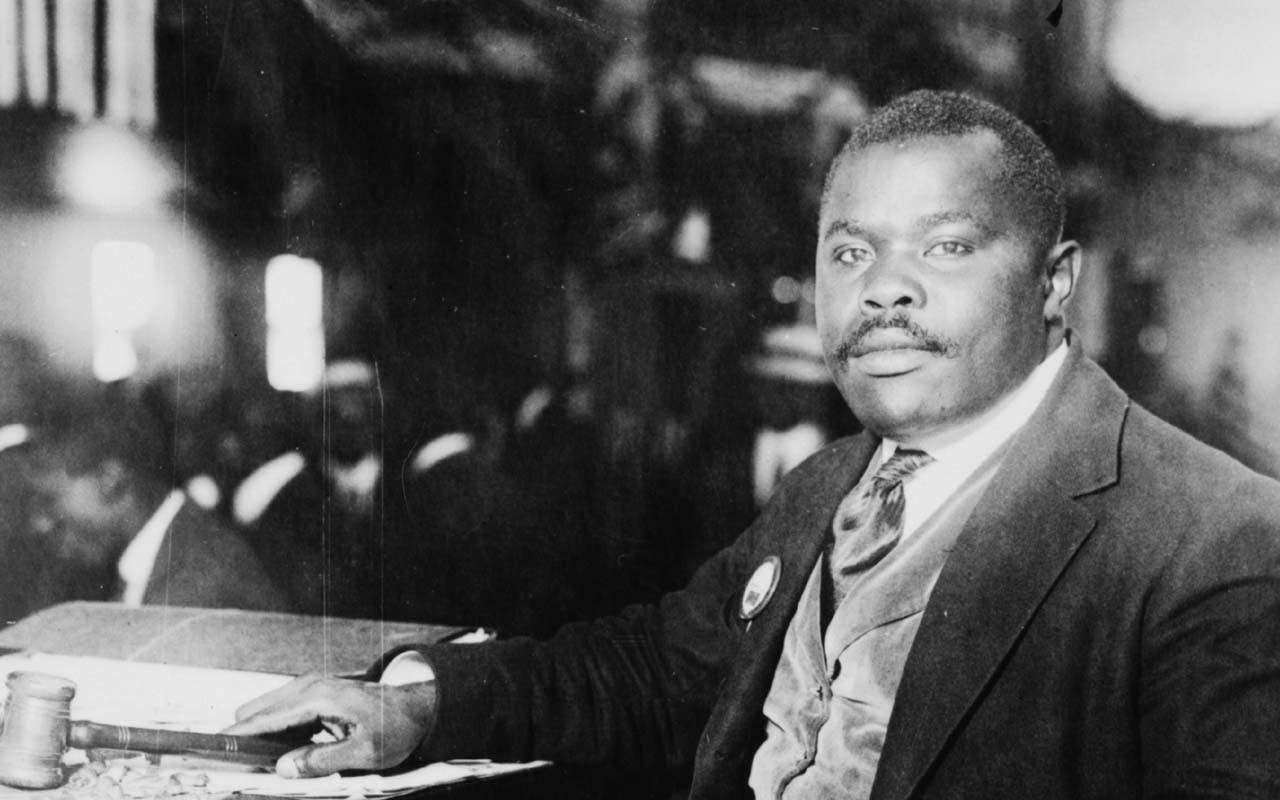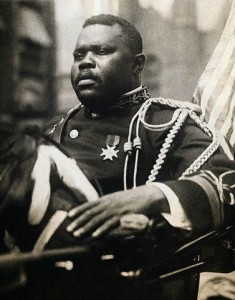In 1900, a whopping 90% of Black Americans still lived in the south.
By 1930, one out of every three black Americans had migrated from the South into northern industrial cities like Detroit, Chicago, Cleveland and New York City. To put it into perspective, according to the US census records, in 1910 there were only 6,000 Black people living in the city of Detroit. By 1929, at the end of the first wave of the Great Migration, that number had grown to 120,000.
In the South, Whites tried to tell Blacks that nothing good could ever come of them moving up North, just like they did when they told Blacks that nothing good could ever come from leaving with Union troops when they came to emancipate their grandparents.
Before long, Blacks living in the deep, rural South had gone the way of the Dodo Bird.
Northern Cities that had been nearly all White at the start of the century were faced with a deluge of black migrants trying to take advantage of the first real opportunity to make a better life for themselves they had been given since their grandparents had been emancipated. For the first time in American history, Blacks were being openly recruited by northern industrialists for good PAYING manufacturing jobs. They weren’t just coming up north hoping for jobs; there were jobs to be had. But this flood of new Black labor was not received well by the existing European immigrant population.
By 1914, World War I had begun to put a squeeze on European immigration to the United States, but there were more than enough Black Americans to fill whatever shortages in labor there were. With so many Blacks moving into cities in such a relatively short period of time, this seemingly endless stream of Black labor created fierce competition for housing and jobs with the existing European immigrants who had hoped to create their own American Dream.
For example, all of these new Black migrants created housing shortages in almost all of the industrial cities that they migrated to. The European immigrants became acutely territorial of their existing areas, refusing to rent or sell to Blacks. The idea behind refusing to rent or sell to Blacks was simple, if Blacks didn’t have a place to stay then they couldn’t compete with them for jobs. But Blacks weren’t going anywhere. In fact, they just kept coming…and coming… and coming.
This territorial response by existing immigrants created a segregation of sorts that forced Blacks to live anywhere they could, which meant that they ended up living piled up on top of each in densely populated older areas of these cities. When these existing immigrant groups moved from the older less expensive housing into newer construction, what once were Jewish Ghettos, Italian ghettos and then Irish ghettos had now turned into Black Ghettos.
So why did these European immigrants find the arrival of Blacks so threatening? It was because they understood that these Blacks were coming from persistent poverty and were accustomed to working for next to nothing. How could these European immigrants negotiate for better wages for themselves if their employer knew that he could save a ton of money hiring Blacks that would consider whatever current wages these European immigrants were already getting or possibly even less than they were getting a blessing?
Ford Motor Company was just one of many companies during this time that played the two sides against one another during labor negotiations, essentially telling European immigrants, “This is our proposal, and if you don’t like it, I am sure there are a few dozen Negroes out there that would be happy to accept that number or even less!” So as far as European immigrants were concerned, having so many Blacks arrive so quickly was crippling their chances of increasing their own earning potential.
Luckily, manufacturing in these industrial cities was strong and there was plenty of work particularly in the steel, automobile, shipbuilding, and meatpacking industries.
I regard the Klan, the Anglo-Saxon clubs and White American societies, as far as the Negro is concerned, as better friends of the race than all other groups of hypocritical whites put together. I like honesty and fair play. You may call me a Klansman if you will, but, potentially, every white man is a Klansman, as far as the Negro in competition with whites socially, economically and politically is concerned, and there is no use lying..Marcus GarveyThe segregation that was created by both a lack of housing working in concert with existing immigrants refusing to rent or sell to Blacks and ended up creating what essentially amounted to “Black metropolises” where they could live. Black Americans soon had their own thriving newspapers, businesses, jazz clubs, churches, and civic organizations serving these highly concentrated areas. For the first time in American history, a true Negro middle class was now emerging. It was also during this period that a medley of all of this energy, economic opportunity and optimism had merged and then released as an unprecedented explosion of literature, arts and culture in Harlem, New York known as The Harlem Renaissance.
For the first time, Blacks could enjoy the fruits of their own labor, and they could see that they could personally benefit from their own hard work instead of just watching someone else benefit from it. A poor black in Detroit might have a neighbor with a college graduate who writes for a black newspaper while a neighbor across the street might own a local grocery store and he is living right next to a person who works third shift at a meatpacking plant.
In 1917, many Blacks saw World War I as an opportunity to once and for all cast aside any questions of not only their patriotism but also their value as Americans citizens. However the experiences that Blacks had leaving the states to fight to liberate Europe couldn’t help but force them reflect on their own freedom at home.
Consider this passage from a letter written General John J. Pershing sent to the French military stationed with the American army, August 7, 1918:
“We must not eat with them, must not shake hands with them, seek to talk to them or to meet with them outside the requirements of military service. We must not commend too highly these troops, especially in front of white Americans”
Black Americans had gone to Paris, France where the French outright ignored calls from the United States military to follow the strict segregation policy that Americans enforced on their troops. Black soldiers, for example, could go into a French restaurant to be seated, and the maître d would seat everyone, first come first serve, regardless if there were White soldiers who had come in after the Blacks waiting to be seated. No one would come over and ask the Black soldiers to give up their tables to the White soldiers. Black soldiers could walk around with French white women, and the French weren’t talking about stringing them up. This was creating a lot of internal conflict between blacks and whites within our own ranks as Blacks were clearly and understandably enjoying being treated as human beings.
Imagine that.
The United States military argued, and rightfully so, that by treating Negro soldiers the same as Whites the French were helping create expectations in the Negro that wouldn’t be met back home in the States. And in some places, they argue might even get them killed.
They were right. Particularly for Black Americans who returned to the South. When Black veterans returned to the States and saw that how they were treated here in the States had not changed, it created a lot of resentment among Black Americans. This in turn created fertile ground for a new type of Black leadership, one that spoke to this generation of grandchildren of Slave’s feelings of resentment and injustice.
Enter Marcus Garvey.
Marcus Garvey wasn’t a Black American but a Jamaican immigrant who is significant to African American history because not only did he amass a significant following here in the United States, but he was the first person of African descent in the New World to create a world-wide movement. Up until Marcus Garvey there had essentially been two schools of thought regarding Black leadership in the United States; the Du Bois school of thought which said Blacks deserve to be afforded the same opportunities as any American citizen, period. Du Bois had even formed the NAACP for this purpose of using the American judicial system to secure Constitutional rights for Black Americans.
And then there was the Booker T. Washington school of thought, which was not to focus on challenging Jim Crow directly, but for Blacks to, instead, focus on developing our own communities through education and entrepreneurship. Washington hoped that then, maybe, when Blacks have built institutions of their own, comparable to what Whites have, then our two communities could find ways to work together that would be mutually beneficial.
In 1915, Booker T. Washington’s died, and his approach to gaining racial equality essentially died with him leaving Du Bois’ “let’s use the legal system to obtain Black’s civil rights” as the guiding the direction of where do we go from here. That is until Marcus Garvey introduced a third alternative.
Marcus Garvey’s message was, essentially, “F#ck ’em!”
“No sane person”, Garvey would say, “would insist on being someplace where they are either not wanted or are forced to be treated like second class citizens. If they don’t want us here in America then let’s go back to Africa.” Malcolm X would be famous for saying something very similar. Now you know where he got it from. Garvey condemned America’s claims to be some beacon of freedom and democracy while they turned a blind eye to Black Americans being preyed upon in their own country “For no other reason than they are Black people seeking an industrial chance in a country that they have labored for three hundred years to make great”, Garvey continued, “it’s time to lift one’s voice against the savagery of a people who claim to be the dispensers of democracy.”
Garvey’s message resonated with many of these disillusioned grandchildren of former enslaved Africans particularly the ones who had returned from Europe. Marcus Garvey formed the UNIA Universal Negro Improvement Association and African Communities (Imperial) League with the motto “One God, One Aim, One Destiny”. And at one point, the UNIA had 65,000 to 75,000 members, paying dues to his support and funding. In fact, Malcolm X’s own parents actually met at a UNIA conference in Montreal.
Although most Blacks didn’t have a lot of money individually, collectively was a different story. Collectively, due to the gains that they had made from migrating north to these industrial cities, Blacks had enough money to make an individual extremely wealthy. Garvey raised money for his UNIA by mailing a brochure with a picture of a boat on the front that he didn’t even own. But it worked. In 1919, the UNIA had setup its first corporation, the Black Star Line of Delaware, and THEN purchased its first ship the S.S. Yarmouth and rechristened it the S.S. Frederick Douglass. All of the publicity surrounding a Black man buying his own ship made many Blacks feel as if they could do anything if they put their resources to it. As a result, the Black Star Line of Delaware brought in some $600,000 in sales of its shares in its first year. Unfortunately, Garvey’s goal of building a fleet of ships fell victim to incompetency as Garvey didn’t have anyone that knew how to actually fix the ship, maintain the ship or even drive the ship.
This is when things started to go south for Garvey, mostly by his own fault.
Garvey began openly dealing with the Ku Klux Klan imperial grand wizard Edward Young Clarke, who’s credited with turning the KKK from a small regional terrorist organization that only killed Blacks in the South into a national organization poised to terrorize and kill Blacks all over the United States.
“I regard the Klan, the Anglo-Saxon clubs and White American societies, as far as the Negro is concerned, as better friends of the race than all other groups of hypocritical whites put together. I like honesty and fair play. You may call me a Klansman if you will, but, potentially, every White man is a Klansman, as far as the Negro in competition with Whites socially, economically and politically is concerned, and there is no use lying.”
It was his buddying up with the Ku Klux Klan that turned many Blacks away from Garvey. Remember it was because of the Ku Klux Klan and the terror they directed towards Blacks that helped drive 1.5 million blacks from the only home they had ever known to the North. They just couldn’t wrap their minds around how Garvey was now calling these very same terrorists the “best friends of the race”.
W.E.B. Du Bois who was never one to mince words had once described Garvey as “a little, fat black man; ugly, but with intelligent eyes and a big head” now called Garvey, “without doubt, the most dangerous enemy of the Negro race in America and in the world. He is either a lunatic or a traitor.”
Garvey, clearly taking offense at being described as having a big head, said of Du Bois, “purely and simply a White man’s nigger” and “a little Dutch, a little French, a little Negro … a mulatto … a monstrosity”.
To say the least, their relationship was strained.
Garvey died at age 52, just six months after literally stroking out after reading an obituary of himself in the Chicago Defender, which stated that Garvey had died “broke, alone and unpopular”.
The fact that Garvey could raise so much money from mostly poor Black Americans wasn’t lost on financially driven, opportunistic predators with designs on getting rich with following the blueprint Garvey created.


